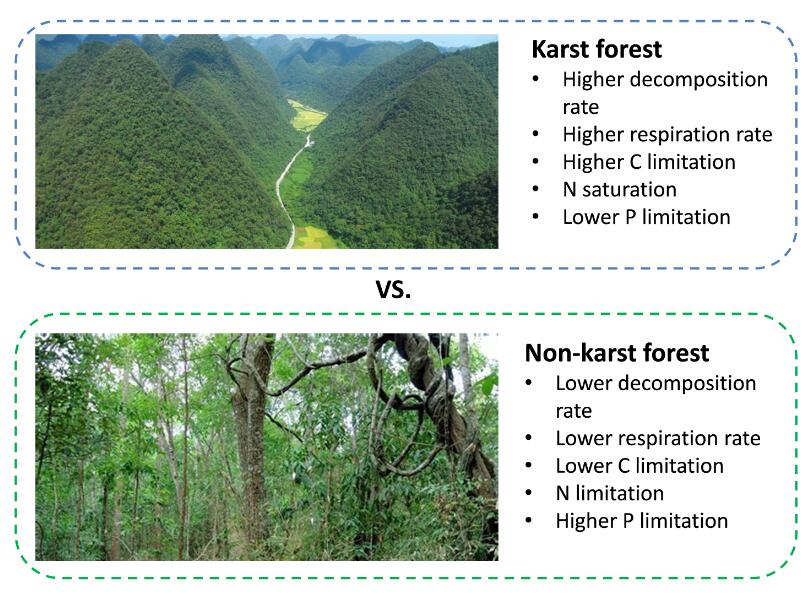- You are here: Home > Research > Research Progress
Karst ecosystem is a widespread and special ecosystem type, whose soil is a huge organic matter pool. How does the organic matter pool in karst soil respond to global changes? One of the keys to answer this question is to understand soil microbial processes and resource limitation in the karst soil.
Researchers in the Institute of Subtropical Agriculture (ISA) of the Chinese Academy of Sciences investigated two major microbial processes (i.e., the rates of decomposition and respiration) and the microbial resource limitation in a typical karst forest using eco-enzymatic stoichiometry as an indicator. A non-karst forest was also investigated as a comparison.
They found the modeled decomposition and respiration rates were significantly higher in the karst forest than in the non-karst forest. "The karst forest was more carbon-limited than the non-karst forest. In addition, the karst forest was likely saturated with nitrogen, but the non-karst forest was limited by nitrogen," said CHEN Hao, a doctoral researcher at ISA.
"Both the karst and non-karst forests were limited by phosphorus, but phosphorus deficiency was more evident in the non-karst forest," CHEN added.
The findings not only highlight the specific profiles of karst ecosystems, but also suggest that the responses of karst ecosystems to global changes should be very different compared to other ecosystems.
This work was funded by the National Key Research and Development Program of China, the National Natural Science Foundation of China, Natural Science Foundation of Guangxi Province of China, and the Chinese Academy of Sciences.
The study entitled "Soil microbial processes and resource limitation in karst and non-karst forests" was published in Functional Ecology.
Contact: LI Dejun
E-mail: dejunli@isa.ac.cn
Institute of Subtropical Agriculture, Chinese Academy of Sciences

Soil microbial processes and resource limitation in karst and non-karst forests. (Image by CHEN Hao)
Address: Mapoling of Changsha City, Hunan province, P.R.China.Tel: +86-731-4615204 Fax: +86-731-4612685

